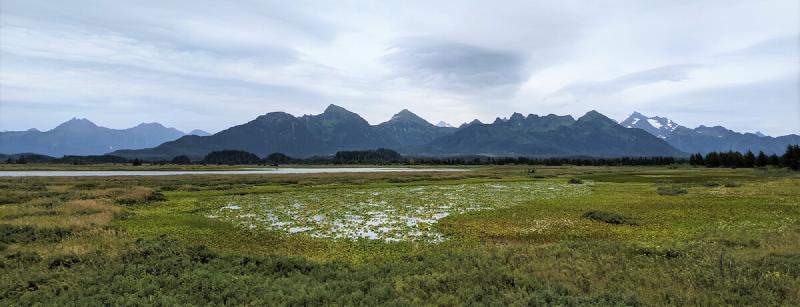What is a habitat?
Common definition is: A habitat is an animal’s home.
This is a good starting point but there are a few potential misconceptions.
- Plants also have habitats. So we should change ‘animal’ to living thing or organism.
- Home can be confusing because it might refer to the structure where an animal lives. (eg. nest, den, sett etc.) Usually mean something like forest, field, or desert. The difference is that we are usually talking about something on a larger scale, shared by more than one living thing.
A better definition to use might be: ‘The area where an organism lives’ or ‘Where an organism makes its home’.
A bird makes its nest (its home) in a tree (microhabitat), or in a forest (habitat).
What makes a specific habitat?
Often the answer is: Temperature, rainfall, animals, plants
It is tempting to teach about habitats through specific examples.
- Deserts are hot, dry, and sandy, with cactuses and camels.
- Rainforests are hot, and super wet.
These examples and simplifications are useful starting points, but can mask some of the amazing things that happen in these habitats. Deserts can be hot in the day, but also very cold at night. They are usually dry, but the rare rains can cause huge changes and explosions of life and activity.
Thinking on a bigger scale captures more of the picture: Climate patterns, the landscape, the community of organisms.
Climate is weather patterns over long periods. Daily and seasonal variations can be a very important part of how a specific habitat works. In order to survive livings things must be adapted to daily or seasonal cycles.
Plant communities, because they are rooted in place, have a significant impact on the character of a habitat. A forest is shaped by the dominant tree species. Birch forests have lighter canopies that oak forests, meaning different understorey plants.
Exploring the reason a plant community is dominant in an area is a good extension because it leads to the abiotic, or nonliving, elements of an area. Climate patterns, soil conditions, topography (how flat or steep an area is, what direction a slope faces).
What is important about habitats?
It’s where animals live. It’s where an animal gets their food, water, shelter, space.
This is all true. But we can take a more zoomed out view and then there are even more important reasons to understand habitats. Habitats are not isolated. They blend into and affect surrounding habitats.
- Rain falling on a hillside will run into rivers. This carries bits of plants and soil with it. This can being nutrients to the river to feed plants, but it can also wash in human-made chemicals like pesticides.
- Woodland on a hill channels rainwater into the soil. Reducing risk of flash floods, or rivers overflowing. (Science Daily)
- Marshes or reedbeds act as big filters. Trapping mud and soil, and cleaning out chemical fertilizers before they can enter a river. (Annals of Botany)
- Winds blowing over the sahara desert pick up dust and carry it around the world. This dust acts as fertilizer for algae in the oceans, and even the Amazon rainforest. (Science Daily)
- Salmon runs bring nutrients from the ocean back into the continents. Which can be an important fertilizer for the thick forests along the Pacific coast of North America. (KQED - There’s something fishy about these trees… ; BMC Ecology)
What does this mean for teaching about habitats?
- Habitats provide for the needs of living things
- Habitats are interrelated
- Living things are interdependent
- Habitats will change over time, and this will have impacts on the living things within them
The themes running through these are about understanding the needs of living things (empathy), and understanding relationships (systems thinking). Relationships between living things and between living things and the non- living parts of the environment.
Empathy is important for working well with others and making decisions in life which will have an impact beyond ourselves.
Systems thinking is where guidance from a teacher is particularly important. Teachers use their experience and knowledge to guide students in identifying connections. Understanding how parts of a system work together is important in making considered decisions and solving big problems with many many different stakeholders.
What might this look like in a lesson or classroom?
-
Look at things from different perspectives and at different scales.
- Focus on microhabitats, like the bottom of a pond, or a rotting log. Explore the details of the needs of the living things there and how they depend on the very specific qualities of that space.
- Spending time building up food chains and then connecting them into food webs.
- Explore different habitats and work together to look for possible connections between them.
-
Identify patterns of useful questions which can be applied in other areas.
- How did climate and geography affect historical events? (Climate change helped destroy these four ancient civilizations - World Economic Forum)
- How did events in other parts of the world affect the place you are studying? (Why did Danish Vikings moved to England - Science Nordic.com)
What does this mean for outdoor education?
Take advantage of the opportunities presented by outdoor venues
- Free exploration of a habitat provides physical experience with complexity of the space and helps develop physical intuition for its qualities.
- Look for how parts of the habitat relate to others.
- Investigate details which are more difficult in classroom settings such as the character and behaviour of animals.
- Examine how habitat margins blend into each other
